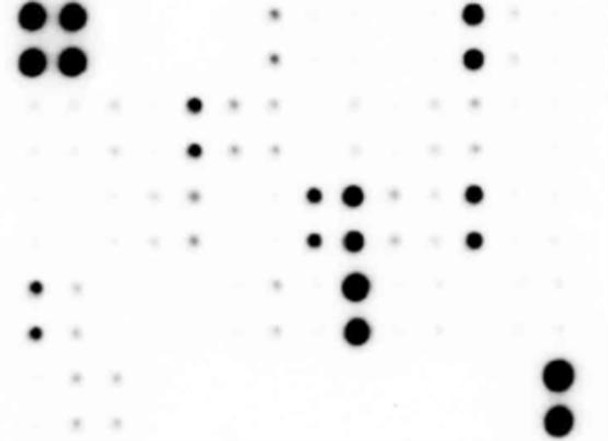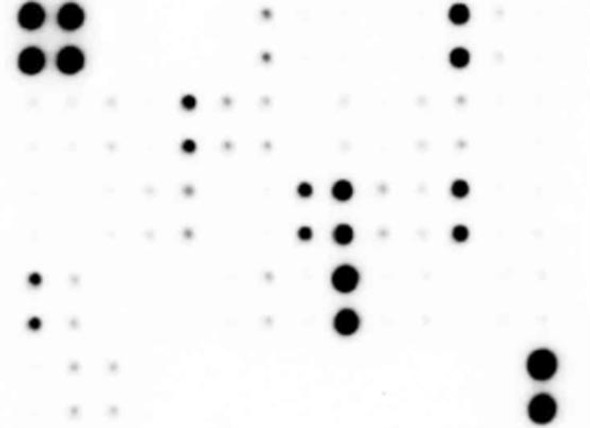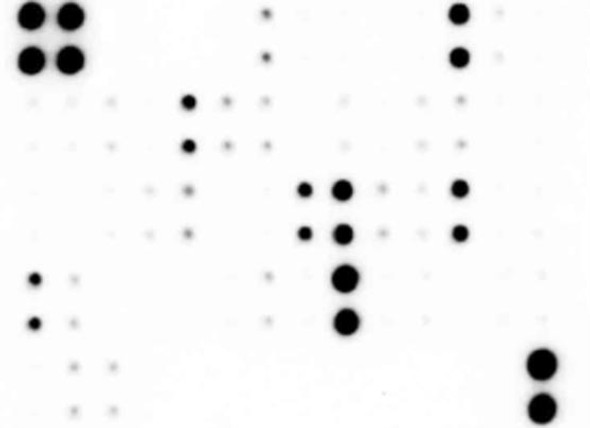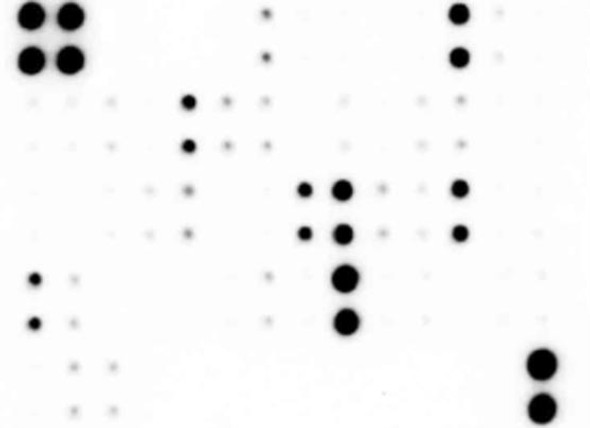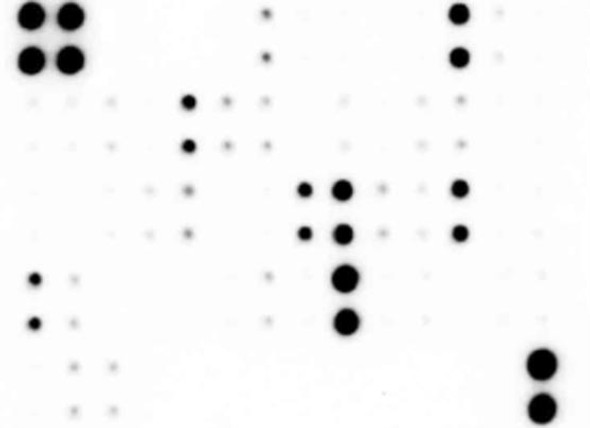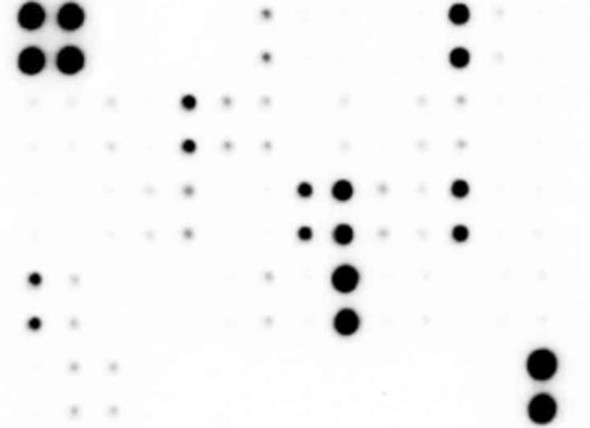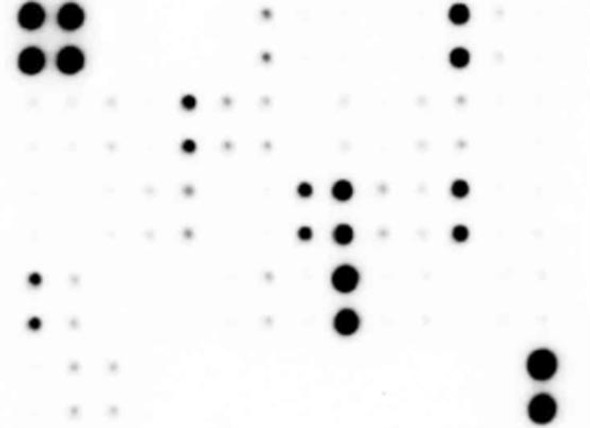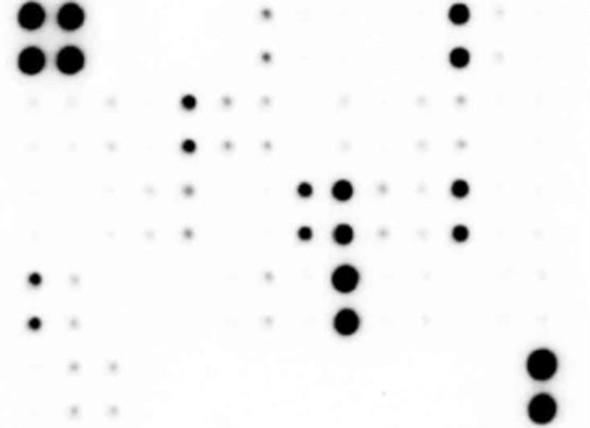Mouse Immune Checkpoint Array (11 targets) (SARB0089)
- SKU:
- SARB0089
- Product Type:
- Protein Array
- Analytes:
- 4-1BB (TNFRSF9/CD137)
- CD27 (TNFRSF7)
- CD40 (TNFRSF5)
- CD40 Ligand (TNFSF5)
- CD80 (B7-1)
- CTLA-4 (CD152)
- Fas (TNFRSF6/Apo-1)
- Fas Ligand (TNFSF6)
- Galectin-1
- Galectin-3
- OX40 Ligand (TNFSF4)
- Reactivity:
- Mouse
- Applications:
- Multiplex Array
Description
Mouse Immune Checkpoint Array (11 targets) (SARB0089)
The Mouse Immune Checkpoint Array 11 Targets (SARB0089) from Assay Genie is a comprehensive tool designed for the simultaneous detection of 11 immune checkpoint targets in mouse samples. This array provides researchers with a high-throughput platform to analyze the expression levels of key immune checkpoint molecules, including PD-1, CTLA-4, Tim-3, and LAG-3, among others.With a sensitivity and specificity optimized for mouse samples, this array enables the study of immune checkpoint pathways in various experimental settings, such as cancer immunotherapy, autoimmune diseases, and infectious diseases.
The Mouse Immune Checkpoint Array 11 Targets is a valuable resource for understanding the complex interactions between immune checkpoints and the immune system, aiding in the development of novel therapeutic strategies for immune-related disorders.Whether you are investigating immune modulation, biomarker discovery, or target identification, the Mouse Immune Checkpoint Array 11 Targets from Assay Genie offers a reliable and efficient solution for your research needs. Order yours today and unlock the potential of immune checkpoint analysis in your studies.
| Product Sku: | SARB0089 |
| Size: | 2, 4, or 8 |
| Species Detected: | Mouse |
| Number of Targets Detected: | 11 |
| Gene Symbols: | CD27, CD40, CD40LG, CD80, CTLA4, FAS, FASLG, LGALS1, LGALS3, TNFRSF9|TNFSF4 |
| Compatible Sample Types: | Cell Culture Supernatants, Cell Lysates, Plasma, Serum, Tissue Lysates |
| Design Principle: | Sandwich-based |
| Method of Detection: | Chemiluminescence |
| Pathway: | |
| Quantitative/Semi-Quantitative: | Semi-Quantitative |
| Solid Support: | Membrane |
| Suggested Application(s): | Multiplexed Protein Detection; Detection of Relative Protein Expression; Detecting Patterns of Cytokine Expression; Biomarker/ Key Factor Screening; Identifying Key Factors; Confirming a Biological Process |
| Storage/Stability: | For best results, store the entire kit frozen at -20°C upon arrival. Stored frozen, the kit will be stable for at least 6 months which is the duration of the product warranty period. Once thawed, store array membranes and 1X Blocking Buffer at -20°C and all other reagents undiluted at 4°C for no more than 3 months. |
| Hover over target for more information | ||||
|---|---|---|---|---|
4-1BB (TNFRSF9/CD137)
| CD27 (TNFRSF7)
| CD40 (TNFRSF5)
| CD40 Ligand (TNFSF5)
| CD80 (B7-1)
|
CTLA-4 (CD152)
| Fas (TNFRSF6/Apo-1)
| Fas Ligand (TNFSF6)
| Galectin-1
| Galectin-3
|
OX40 Ligand (TNFSF4)
| ||||
- Easy to use
- No specialized equipment needed
- Compatible with nearly any liquid sample
- Proven technology
- Highly sensitive (pg/ml)
- Sandwich ELISA specificity
- Higher density than ELISA, Western blot or bead-based multiplex
- Mouse Immune Checkpoint C1 Membranes
- Blocking Buffer
- Wash Buffer 1
- Wash Buffer 2
- Biotinylated Detection Antibody Cocktail
- Streptavidin-Conjugated HRP
- Detection Buffer C
- Detection Buffer D
- Lysis Buffer
- 8-Well Incubation Tray
- Plastic Sheets
- Array Templates
Other Materials Required
- Pipettors, pipet tips and other common lab consumables
- Orbital shaker or oscillating rocker
- Tissue Paper, blotting paper or chromatography paper
- Adhesive tape or Saran Wrap
- Distilled or de-ionized water
- A chemiluminescent blot documentation system , X-ray Film and a suitable film processor, or another chemiluminescent detection system.
| 1. | Block membranes |
| 2. | Incubate with Sample |
| 3. | Incubate with Biotinylated Detection Antibody Cocktail |
| 4. | Incubate with HRP-Conjugated Streptavidin |
| 5. | Incubate with Detection Buffers |
| 6. | Image with chemiluminescent imaging system |
| 7. | Perform densitometry and analysis |

